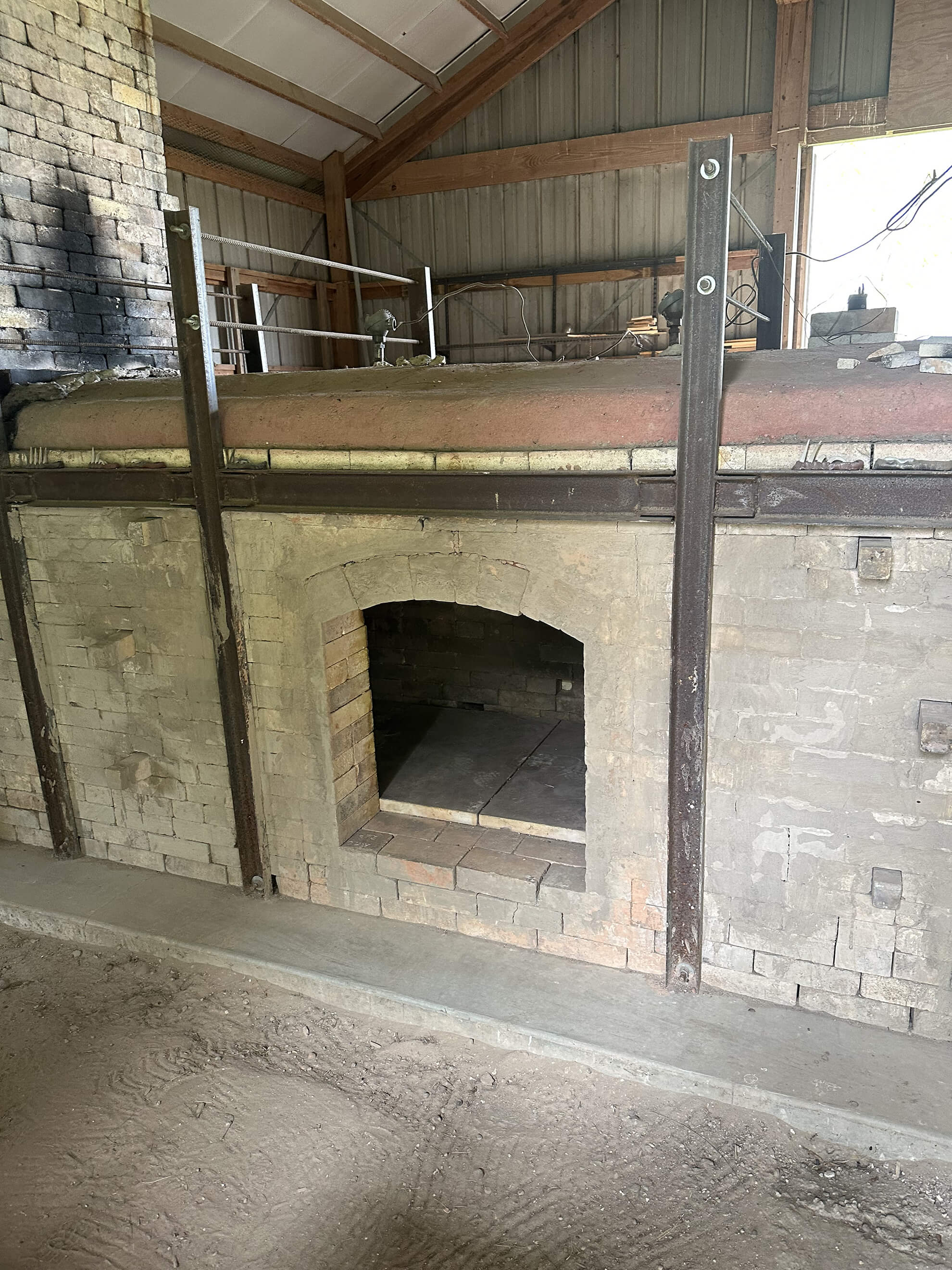
The idea behind this handmade, woodfired pottery is to surround yourself with beautiful, usable things, Simon said, “If you surround yourself with things, you value, the experience is that much richer.”
Although pottery, like its ornamental sister, is breakable, Simon said that it is valued more. “If the pots are important to us, then they will be important to you, and enrich your lives.”

The process of creating the pottery is very laborious. Using a turn table, the clay is formed, then fired in a traditional kiln then trimmed. “Once finished it dries bisque. This is the first step; it is still porous.”
Next, they will line it with glaze and put it once arranged into the wood kiln that Simon specifically built. “When it gets hot enough, it will turn to glass.”
Firing up the kiln is a weeklong process. “It takes a day to load the pottery, fire 52 hours, and cooling three days,” Simon said. While firing he added, “You can see the flames racing across the chamber. It is a river of flames moving.”
Due to the placement of the pots, the flame will catch each pot/dish in different ways. They use different materials, metal, glaze, special woods and this all results in uniquely different effects. Two mugs may look the same going in, but they are different coming out of the kiln. “We evoke those pallets; this is a multi-variable system,” Simon said.
Elin has made a film about the wood firing process as part of her apprenticeship. The film provides details about how it all works. You can see this on her website at Film — ELIN HUGHES. She shared, “This short film documents my second firing at Mill Creek Pottery, firing no.18 of Simon’s train kiln in May 2023.”
It is fascinating to listen as she shares the process in the Welsh language with English subtitles so you can follow along the process that Simon said, “Takes tree full cords of wood per firing. I fire up the kiln four times a year for me to teach workshops.
Elin has been enjoying her time here in the US and learning, she said, to make her pottery “more authentic”, plus she has been learning how to do Google Sketch and design in CAD.
She said the pottery is different here than at home. “It is different between US and English pottery, ours is Colonial based, and in the US, you have an immigrant basis, we have a different perspective. Before I didn’t know the ceramic scene in the US. I have met a lot of people. I come from rural mountains, so being here is inspiring.”
To see more of Elin’s reflections, you can read her blog on her website at www.elinhughes.co.uk.

Simon said. “During my 2nd semester in college, I could see the purpose of this role, it made a lot of sense to me. I am lucky I figured out early I wanted to make good work and talk about it.”
Simon has taught classes, written articles, and offers workshops as well as the 18-month apprenticeship that Elin is currently enjoying. It was after building his own kiln that Simon felt his work was really his own. Simon builds kilns for others and has traveled all over the world building them. “I could build one in two weeks with a crew,” he shared.
Simon and his wife Susan and family came to Springfield six years ago for her job as pastor of the 1st Presbyterian Church. They are enjoying the rural landscape outside of Pawnee. Before moving here, they lived in Wisconsin.
They offer special events at Mill Creek Pottery. “On October 23rd, we will be ready to fire, then we will have a sale November 18th with the work from our firing the kiln.”

This event draws artists from all over. “During the November firing, there will be potters from Australia, they will stay for a week.”
“We try to fire consistently. We load differently each time, and the pots will look different the environment will affect what pieces look like. I like that aesthetic on pots, and plates to not all look the same, but they are like a family with a common theme.”
Simon and Elin invite the public to stop by for the November 18th event. There will be a poster on his website about the open house. “We encourage people to come by and see the pottery and kiln. Today, everyone is disconnected from how they happen.”

When asked what his favorite aspect of being a pottery artist is Simon said, “My favorite aspect is going through the rhythms. By the end, I just want to keep making things from wet clay. Then the firing, it is exciting, then the unload, and hand sand after firing, that is a good time to look. Then we use them. Firing is like sending a letter, then you hear back, then respond. I really like always growing and getting richer and better.”
To see Simon’s work that is available for purchase, check out the items online on his website Simon Levin. Besides functional pottery dishes, Simon also has tables you can use and vases etc. To reach Simon, call him at 715-851-3280.
